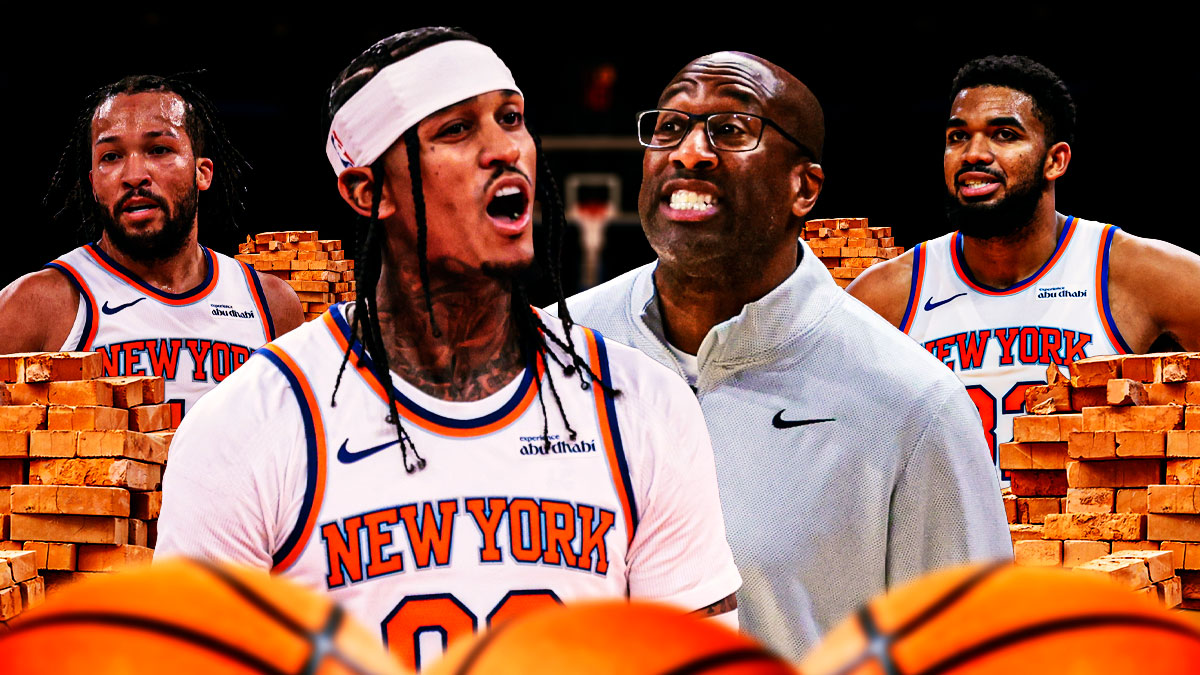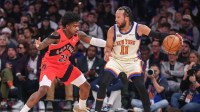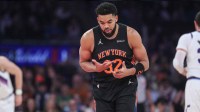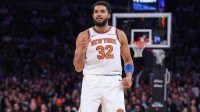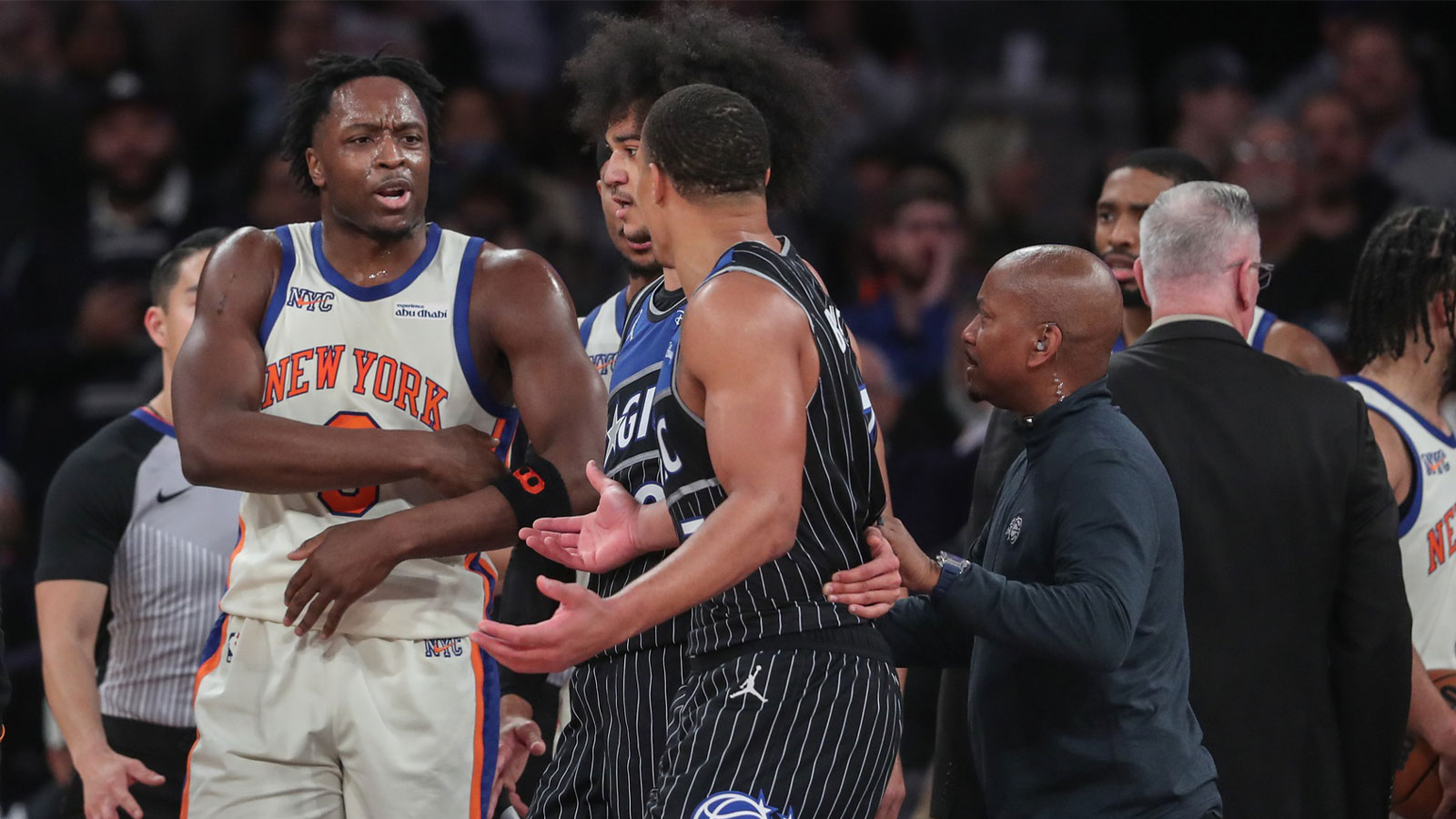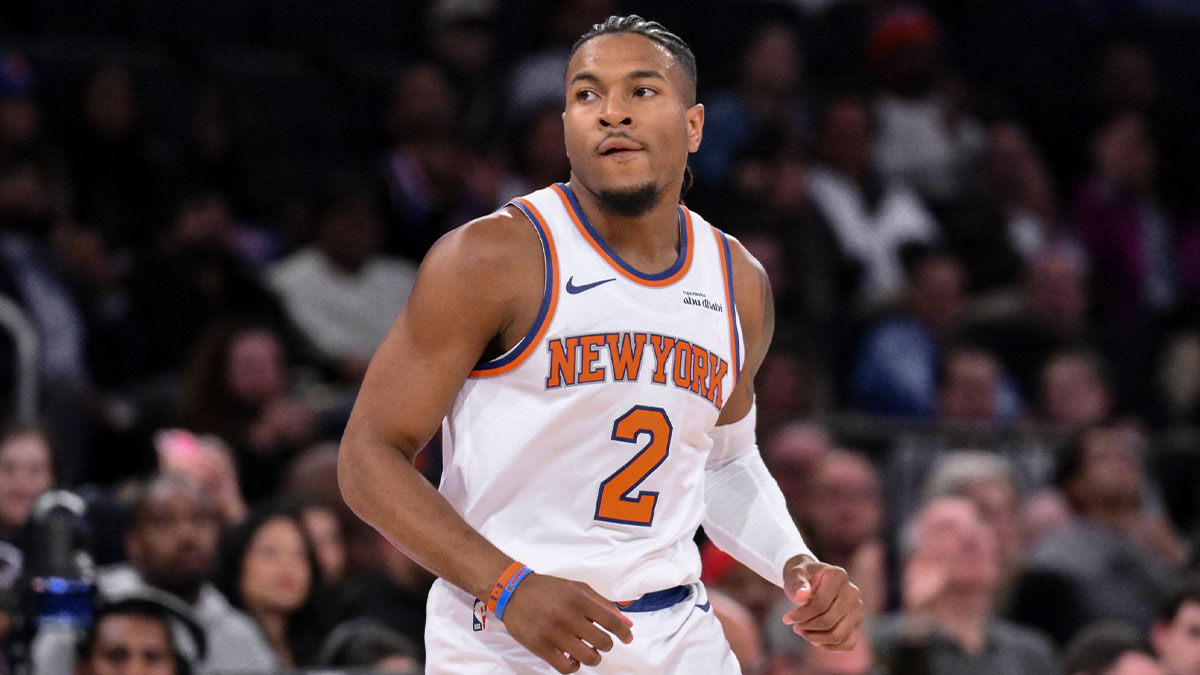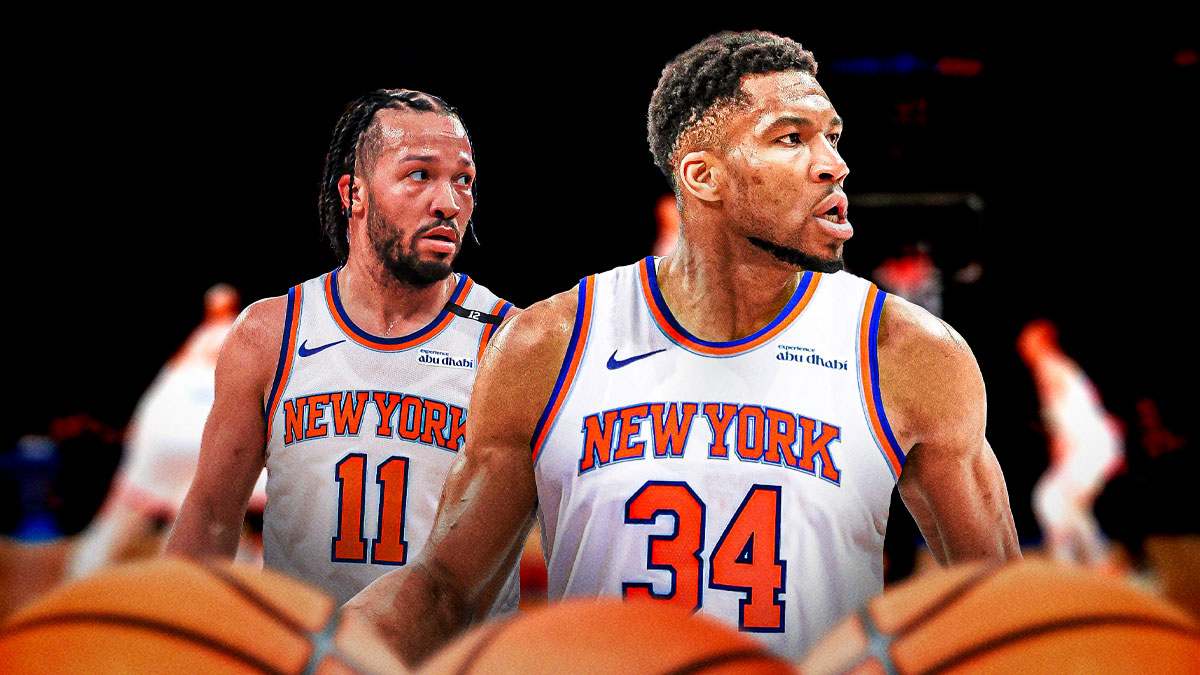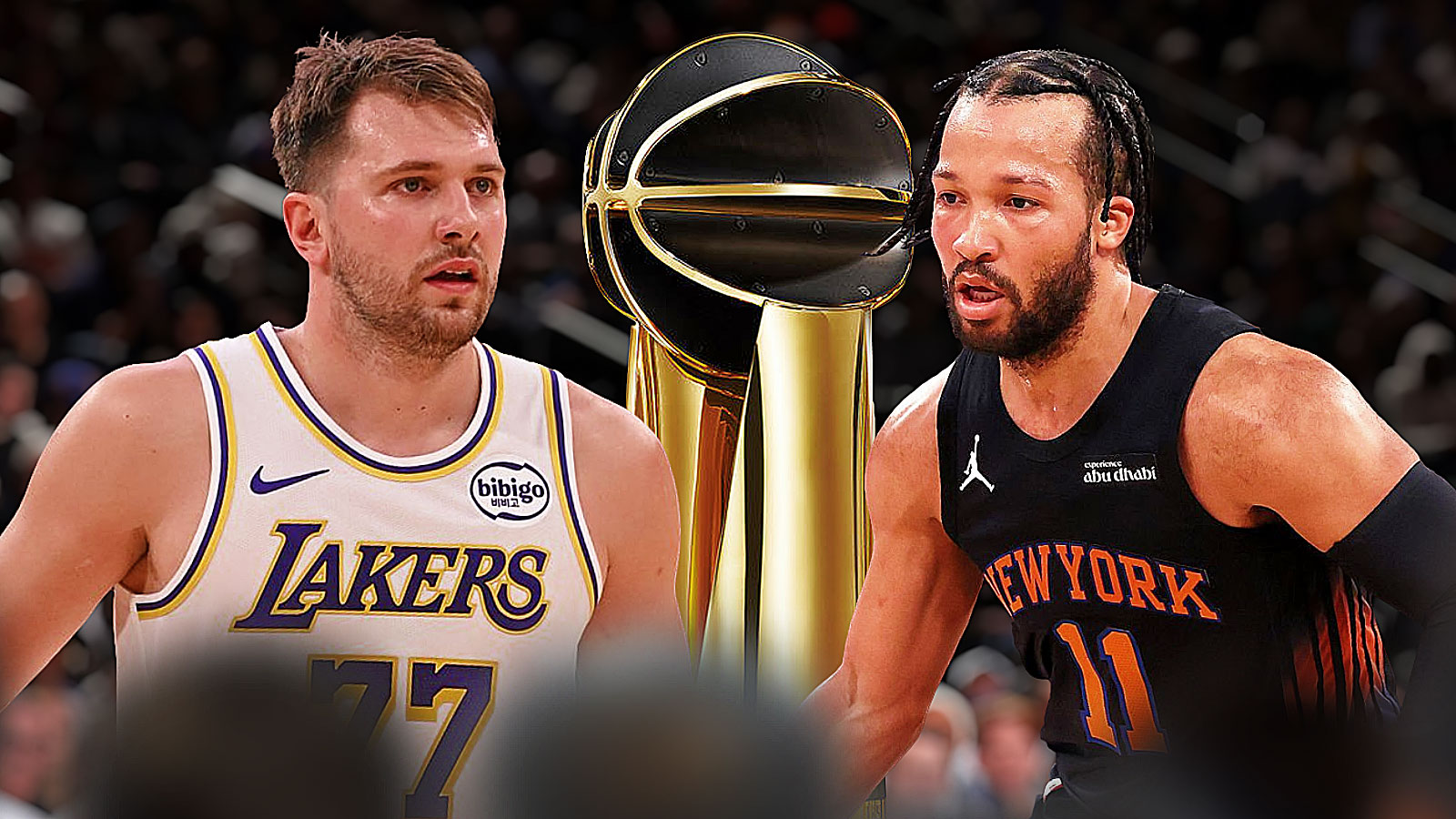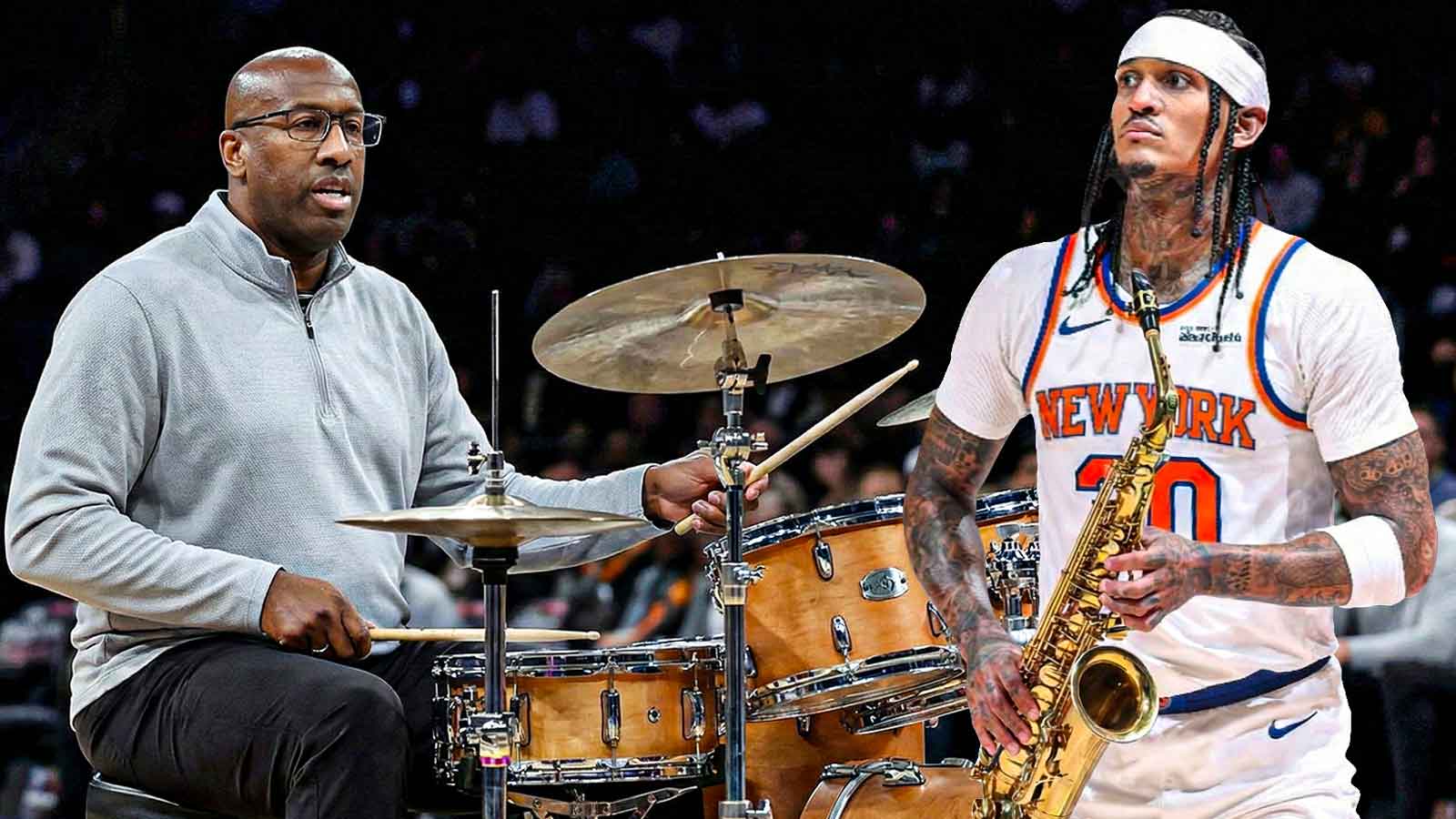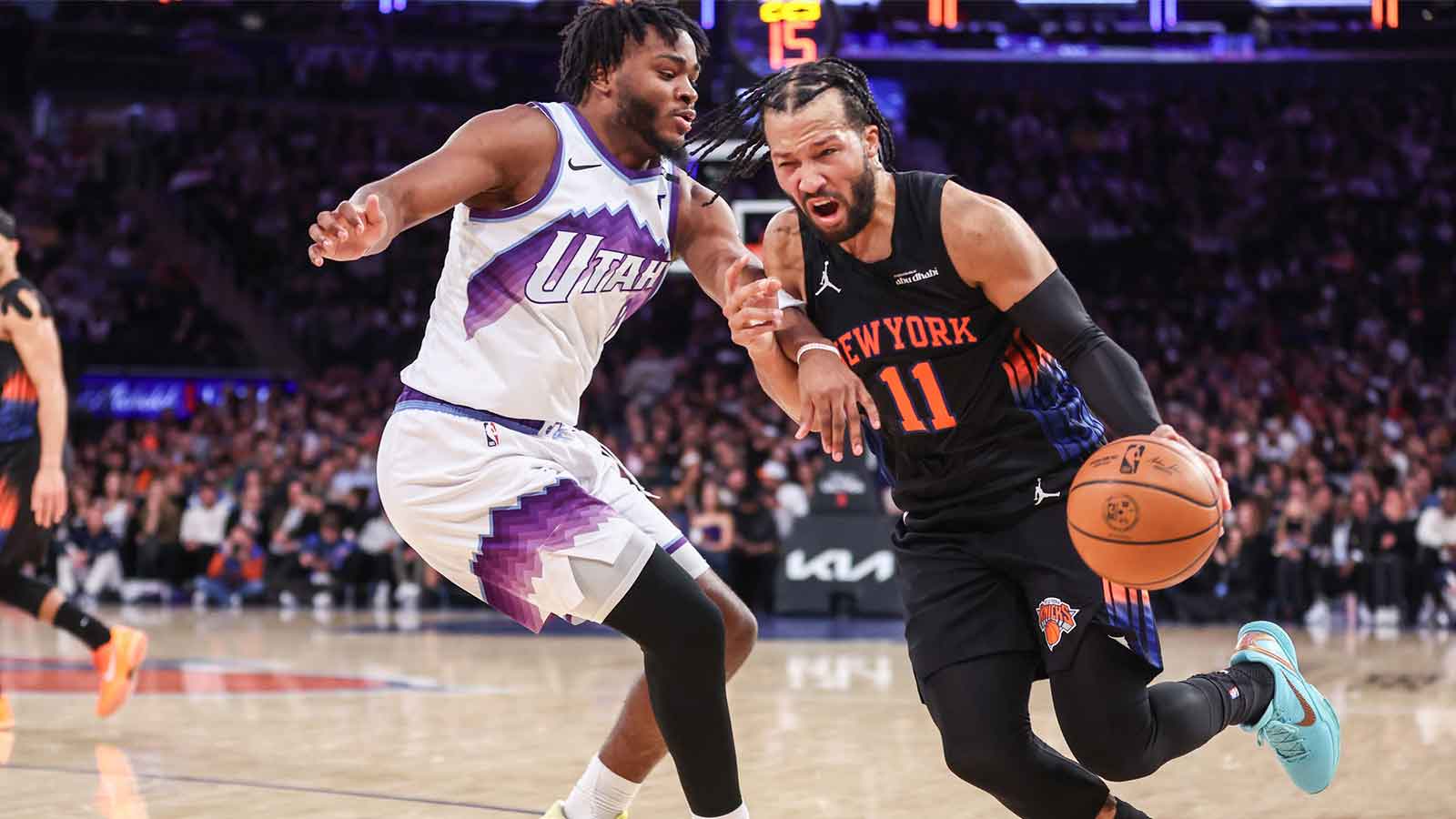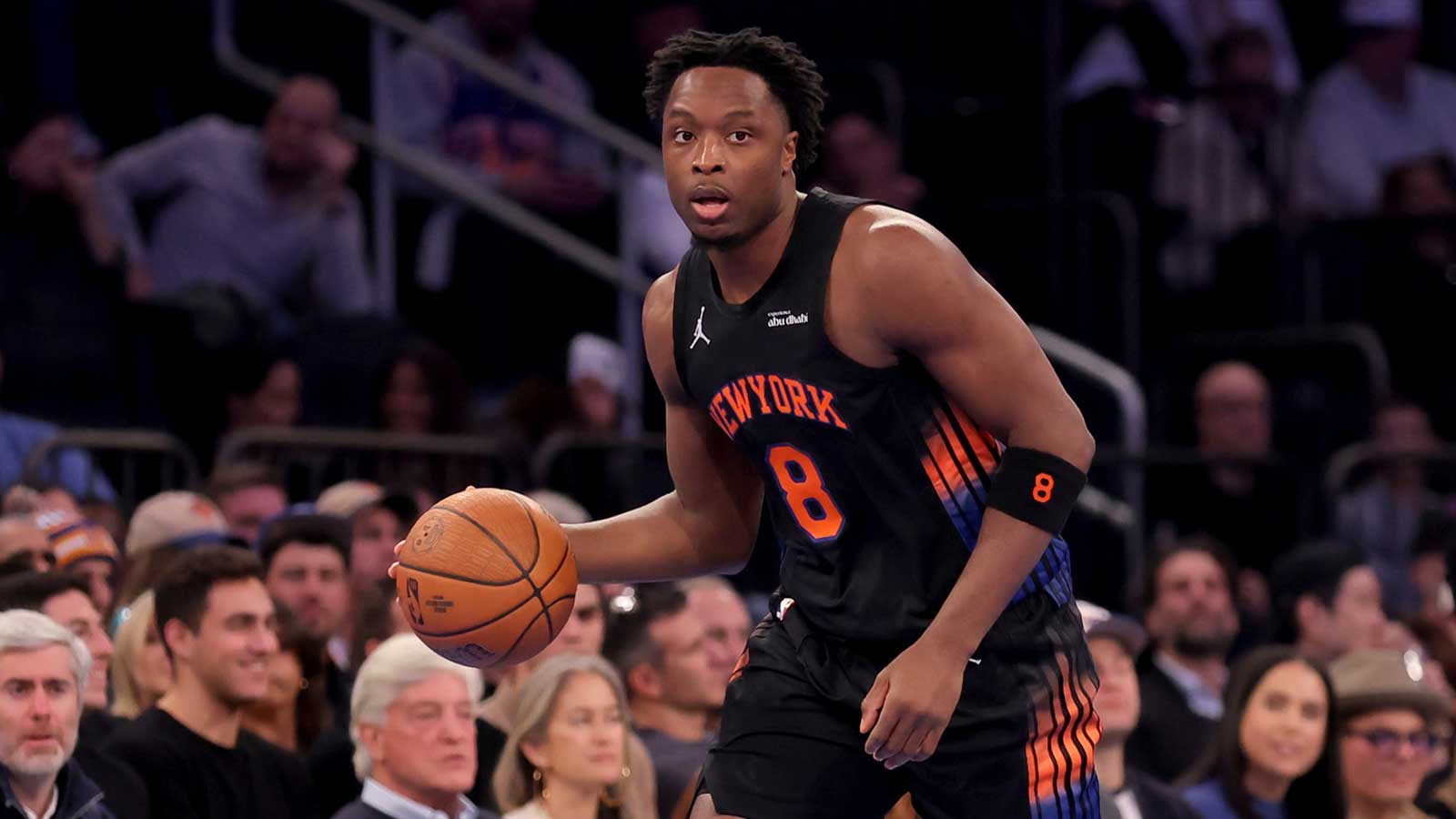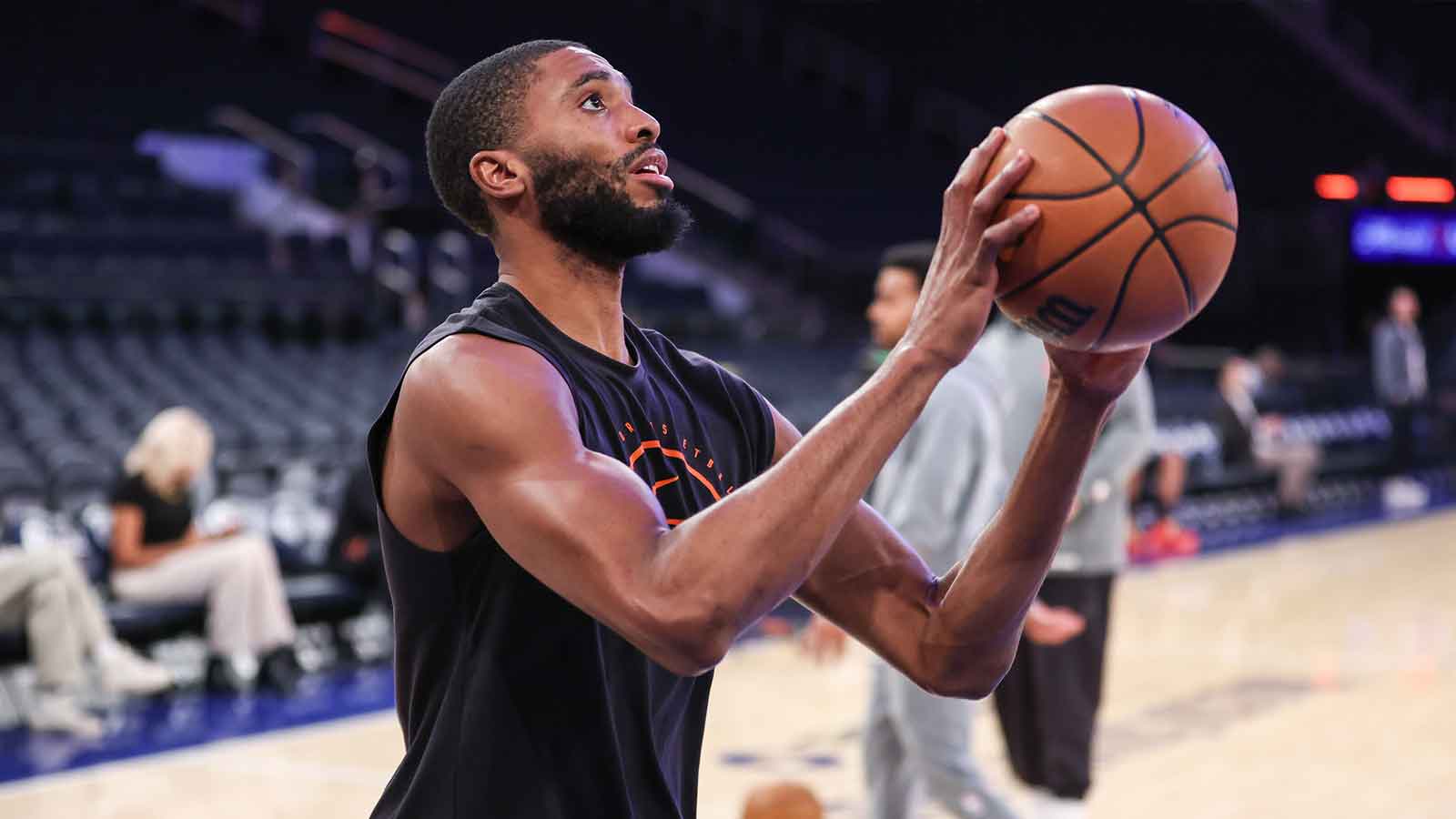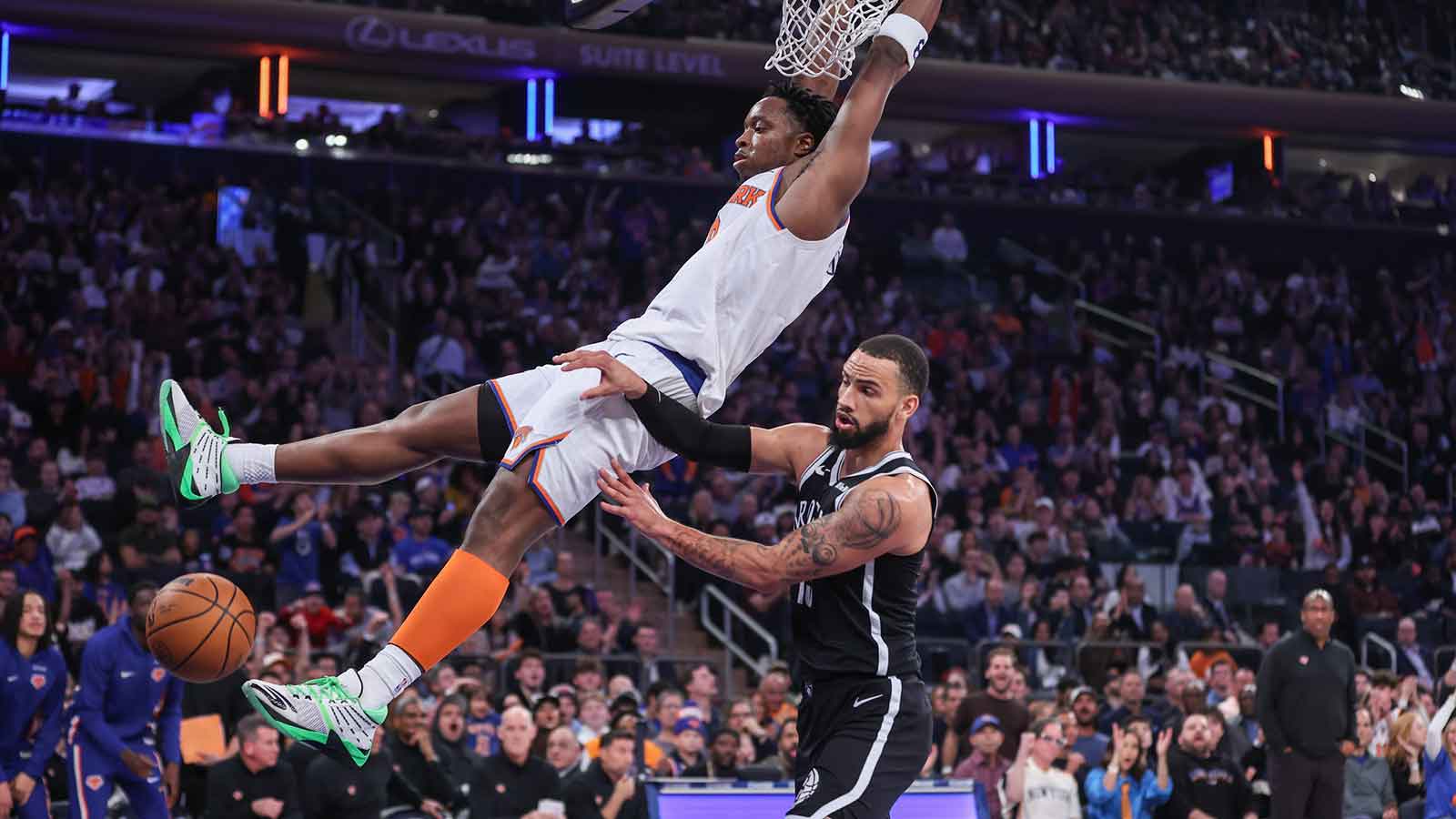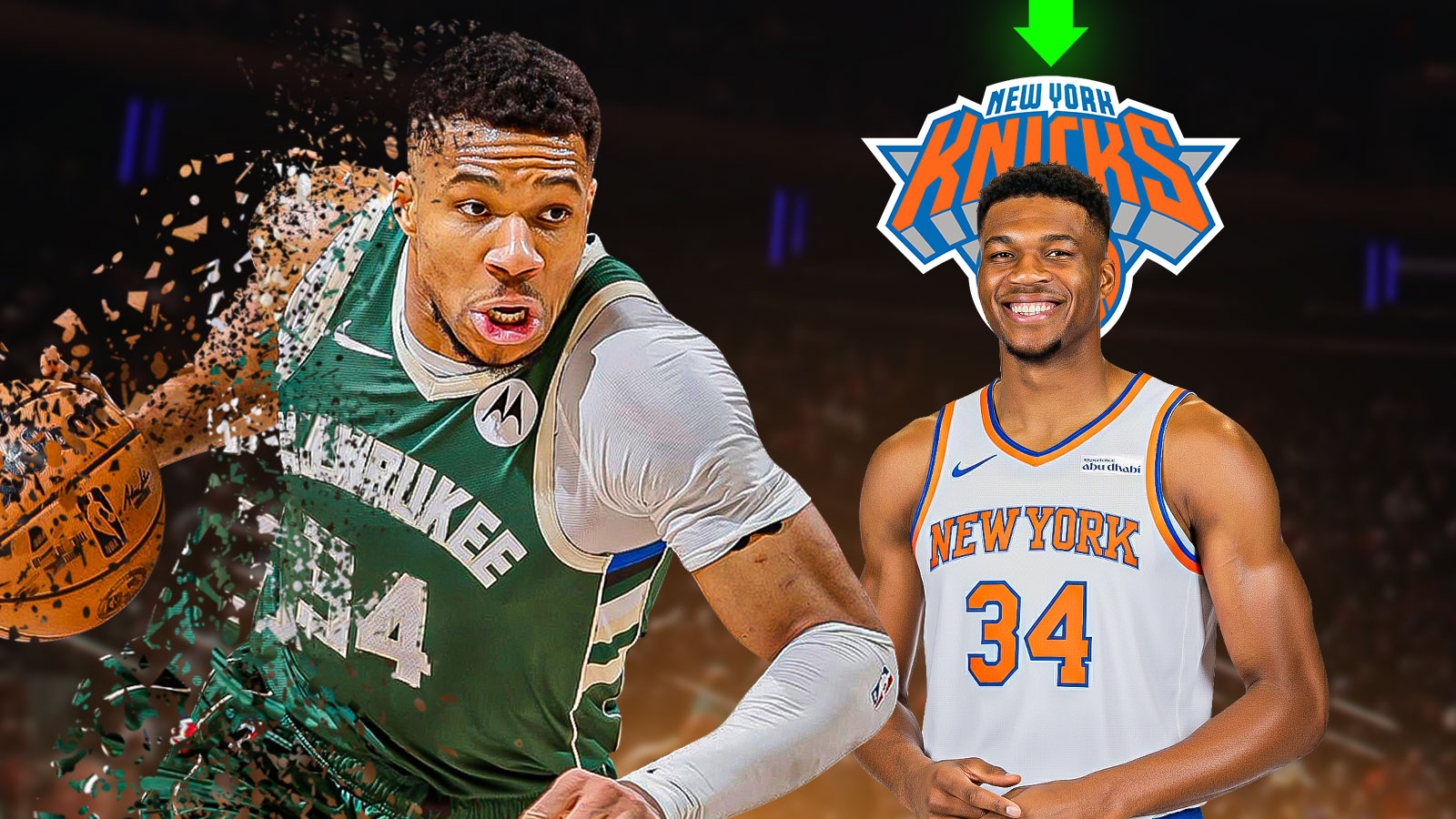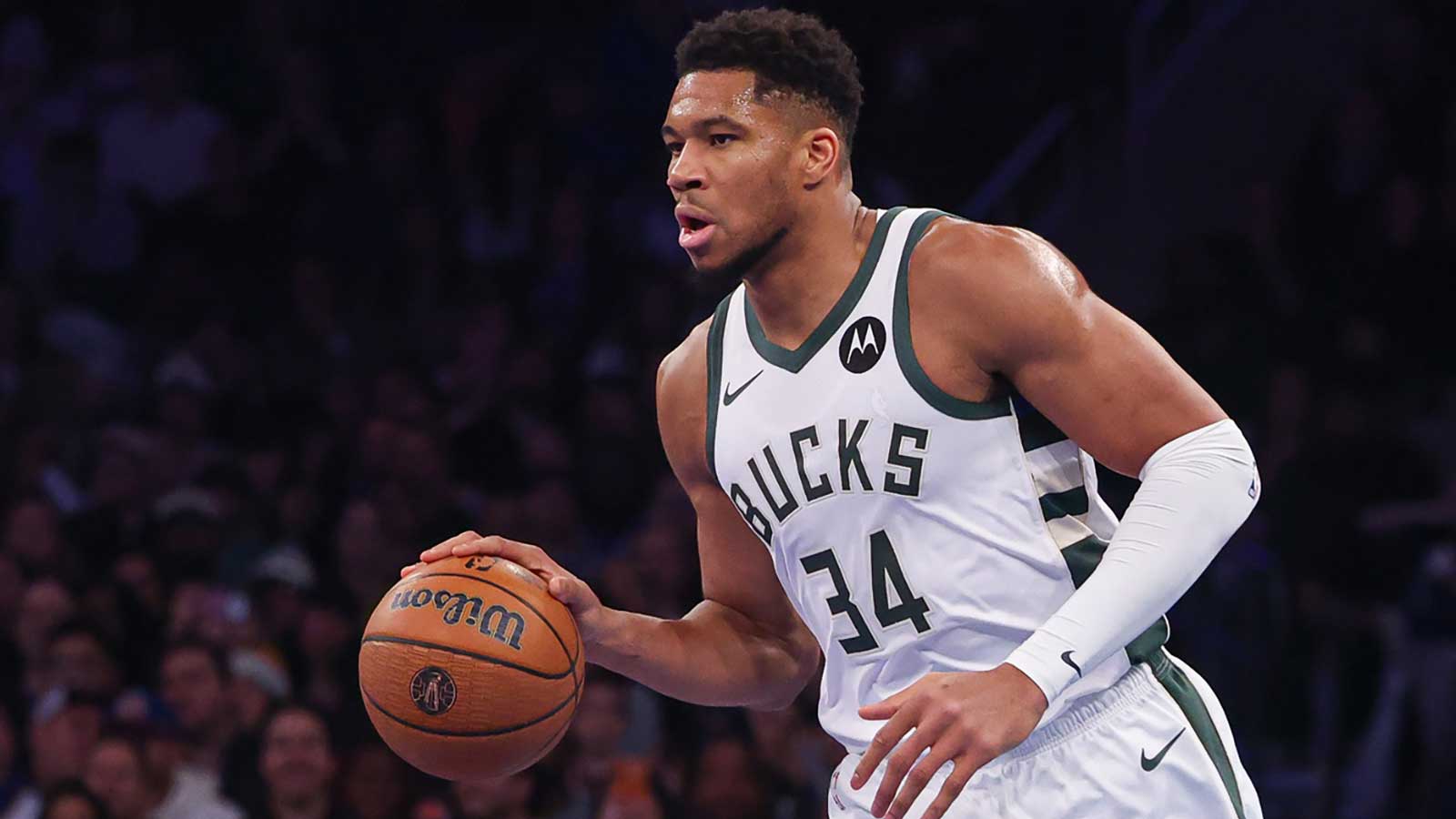The New York Knicks' new offensive philosophy has been on full display through the team’s first three games this season. New head coach Mike Brown has encouraged the Knicks to shoot, pass, and run more freely. And the players have been listening—especially when it comes to shooting. New York is shooting significantly more 3-pointers so far this season. But its recent loss against the Miami Heat demonstrates exactly why the Knicks would benefit from a little more structure in their offense.
Knicks live and die by the 3-pointer
The Knicks shot an eye-popping 46 3-point attempts in their first outing of the 2025-26 season. They doubled down in its second game, hoisting 45 3-pointers. New York connected on 35% and 38%, respectively. And not surprisingly, both of those games were wins.
But in its third game against Miami—its first road game this season—the Knicks made only 28% of its 54 3-point attempts. It seemed like the Knicks either lacked the patience to look for other shots or forgot how to do so. And therein lies the problem with having an eternal green light to shoot and limited offensive plays to rely on.
For context, the Knicks shot 34 3-pointers per game last season, 27th in the NBA, despite making 37% of them (eighth in the league). That was pretty obviously too few, considering how regularly they made their attempts. But New York may have gone too far in the other direction through the first few games of 2025-26.
Granted, there are other reasons the Knicks lost to the Heat. They shot poorly from the free-throw line. They gave up 31 free throws. And they surrendered 31 fast break points. But when possessions count as much as they do in the NBA, teams must consistently generate points. And when you shoot as poorly as the Knicks did against the Heat, you have to adjust—or you lose.
Knicks must figure out how to use 3-pointers—but not rely on them

It comes down to being more selective. When New York makes its 3-pointers, it works well. Obviously, if you can make approximately 40% of nearly 50 3-pointers, it behooves a team to shoot it.
But when you make only 28% of your 3-point attempts, you must look elsewhere for offense. And if you are overly reliant on threes, it becomes more difficult to organically find ways to score. Striking that balance will be vital for the Knicks' success this season. Thankfully, it's early enough in the season to expect it to work itself out.
The shift toward shooting more 3-pointers has been underway throughout the NBA for some time, and it's continued this season. In 2025-26, 10 teams are averaging 40 or more 3-point attempts per game. Only four teams averaged 40 or more last season. That's an intuitive result of a preference for an increased pace. But there's a pretty obvious difference between good shots and bad ones.
New York leads the NBA in 3-point attempts per game. But they must avoid falling into the bad habit of looking for 3-pointers too quickly. Instead, they must look at the 3-point shot as a weapon, shooting when open but using the space that's created by playing five-out lineups to attack to basket.
Losing a relatively close game early in the season after winning your first two games should by no means signal time to sound the alarm. It's probably a good lesson for Brown and his team to learn. But Brown must impart exactly how important it is to look for other ways to score when 3-pointers don't fall. And the Knicks have to remember what its identity has been in the recent past and how it's generated points. Striking a balance between what the Knicks have been and what Brown wants to do is probably a best-case scenario for a team that's needed more offensive creativity—but that obviously should want to keep its gritty persona.

